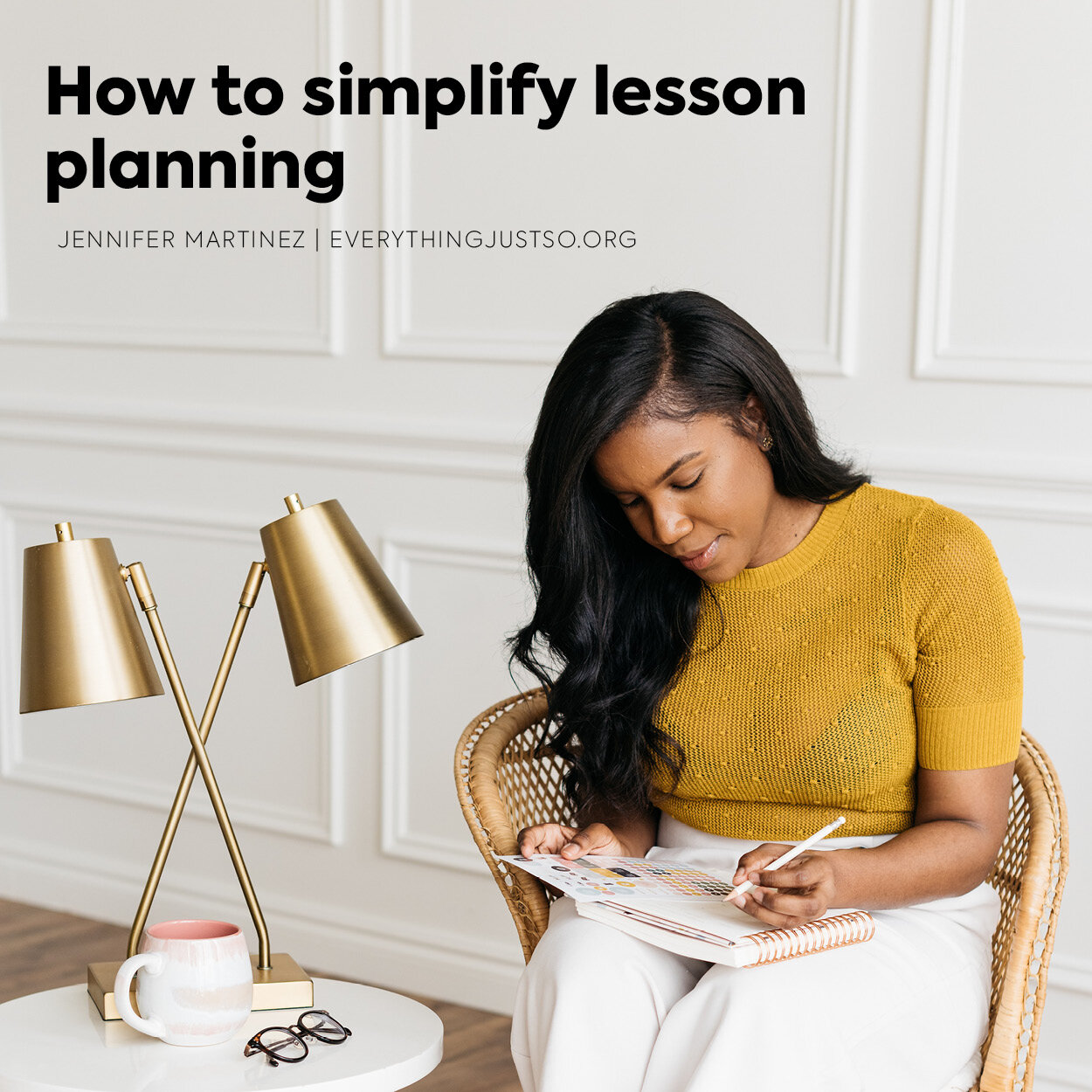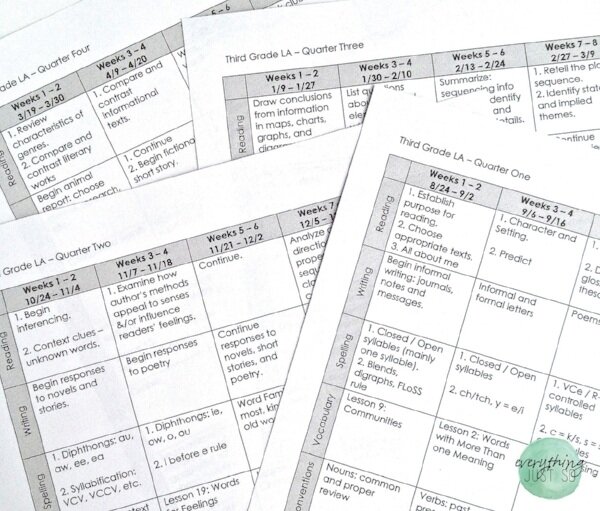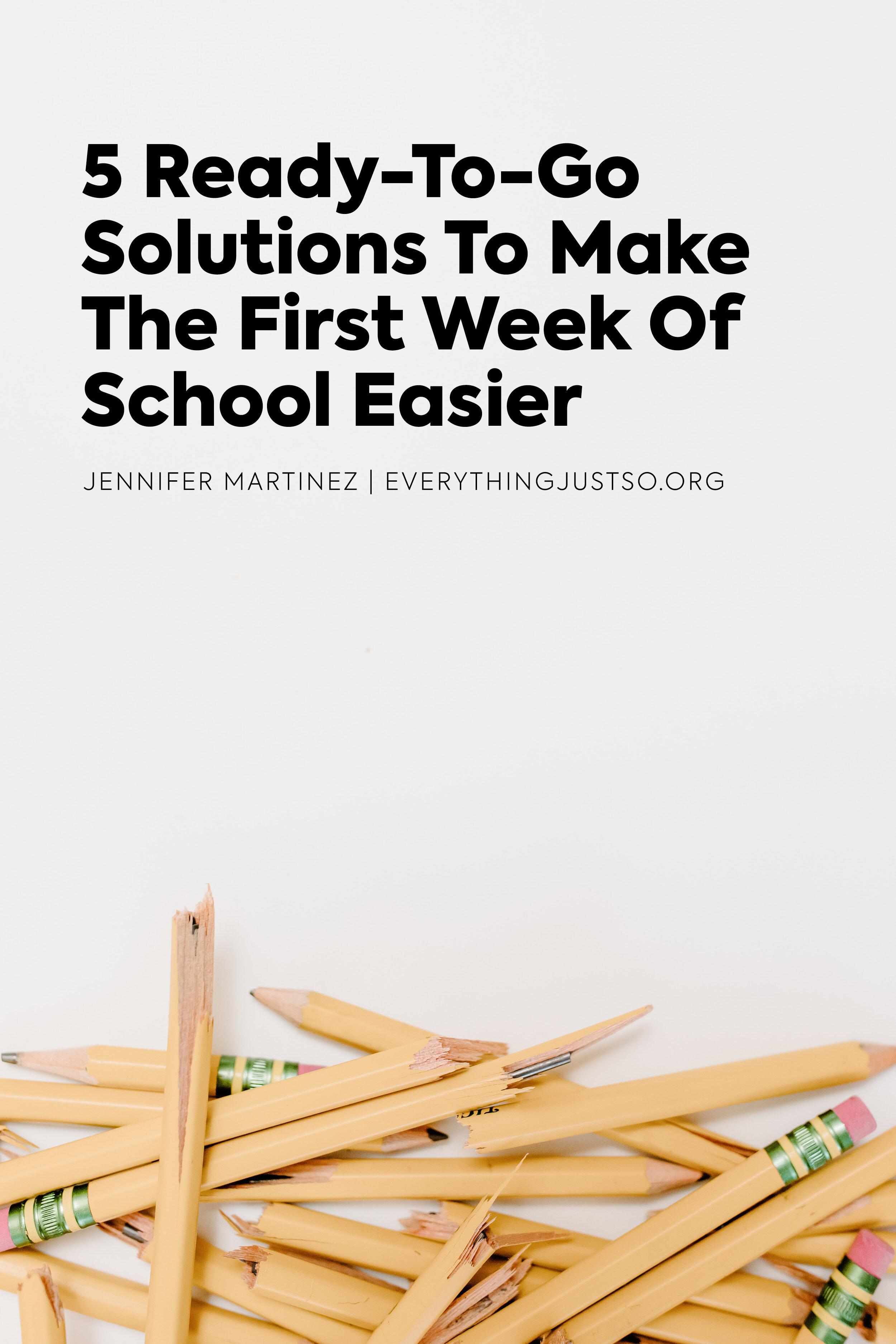4 Easy Ways to Simplify Your Lesson Planning Process
Lesson planning.
Two words that elicit either joy or dread in the hearts of most teachers. As one of the most important parts of our job, it often consumes the largest chunk of our time. Without a systematic structure in place for planning, the process can leave you frustrated and without positive results.
Lesson planning doesn’t need to be a chore.
Establishing routines and using a systematic planning approach can go a long way to simplifying your lesson planning process.
Here are four simple steps that made planning easier and saved me hours of time.
Four steps to organizing your lesson planning process
Start with a yearly plan
I'm a big picture kind of girl.
And I honestly believe that in order to be a successful teacher, you have to think big picture. Teaching is like taking a nine-month road trip.
You need to know your final destination before you can start planning stops along the way.
A yearly plan is your trusty road map to make sure you reach each destination successfully. An annual guide charts all of the content that must be taught in a year and contains specific stopping points where units end. If you're trying to plan daily (or even weekly) lessons without a year's plan in hand, you're going to end up spinning your wheels.
Truly.
Each district handles curriculum maps (pacing charts, curriculum guides, etc.) differently. Some allow each grade level to develop their own while others assign this duty to curriculum support staff. If you don't have one, seek one out immediately.
Summer is the perfect time to tweak yearly plans, making small adjustments based on experiences from last year.
Have a systematic structure for mapping units
Once you have your annual plan, start breaking out content into specific units. Tomorrow I will tell you all about the approach I use that, in my opinion, is simply the best. It isn't easy and takes some getting used to, but I promise the work is worth it! I won't spend time on this point today, but encourage you to come back tomorrow to hear all about it.
Regardless of your choice, just have a method! Choose a system that is structured and reliable. If you're not up for my recommended approach, seek out the opinions of seasoned teachers you respect. See what type of process works well for them.
As in all aspects of teaching, having a mentor in the planning process is priceless.
Set a dedicated time for planning
Do you have a weekly or monthly time that you devote to lesson planning?
If not, I would strongly encourage you to do so. Consider it a date with your planner and schedule it on your calendar if you must. This step is crucial if you want to make planning a priority and end up with results that work.
I had two recurring dates. The first Saturday of the month was dedicated to planning upcoming units while Thursday nights were reserved for creating plans for the following week.
When making weekly plans, I used my unit plans and incorporated reflections from the previous week. If specific aspects of lessons went well - I tried to recreate those during the next week. And if certain lessons needed reteaching or adjusting, I allotted time for this as well.
My weekly planning time also was used to collect teaching and student materials, make copies, and sort resources into daily trays so that I was well prepared for the following week. Completing this task on Thursday nights freed up my weekends and ensured that Monday went smoothly.
Unless something important came up in my family, these "dates" were set in stone. I didn't skip them to go out with the girls or leave early because I was tired. Organizing my schedule to have dedicated planning time was one of the best things I did to improve my experience as a teacher. It improved my lesson plans while saving me valuable time.
Use a planning form
In my years of teaching, I've used stacks of different planning forms.
Initially, I used forms created by others, but never found one that totally worked with my method of planning or my schedule. My personal form has gone through various changes and gets updated each year for my specific schedule.
Regardless of whether you create your own or use someone else's, be sure to have a consistent form.
My weekly form was rather lengthy, but it had space for each lesson component such as Reading Workshop Mini-lesson, Writing Conferences, and Genius Hour. I also had specific notes typed on the form that reminded me of important events such as sending a group of students to a peer's class each week for buddy reading.
If you're just starting out, borrow a template from a colleague and keep notes on parts you'd like to adapt for your own needs.
Having a set template not only saves you time, but also comes in handy when you're being observed. In some schools, having visible lesson plans is mandatory. But even if it's not required in your building, having your weekly plans out on your desk helps build confidence in the eyes of your administrator. It also serves as justification for choices made while teaching.
Looking for more help?
If you’re looking for step-by-step instructions for completing the tips shared here, be sure to check out my Planned Just So™ course. It’s the only planning course of its kind that teaches you step-by-step how to create a year-long instructional plan, design units that are aligned to your standards and keep students engaged, and provide you with tips for making your overall planning routine as simple as possible.
In my course, you will go from feeling stuck and overwhelmed to feeling empowered and in control as you learn the systematic process of creating lesson plans that increase rigor for your students and free time for yourself.
Planned Just So™ will transform your professional life and help you reclaim your personal life. Learn more here.
Click the image below to save these tips for later:














